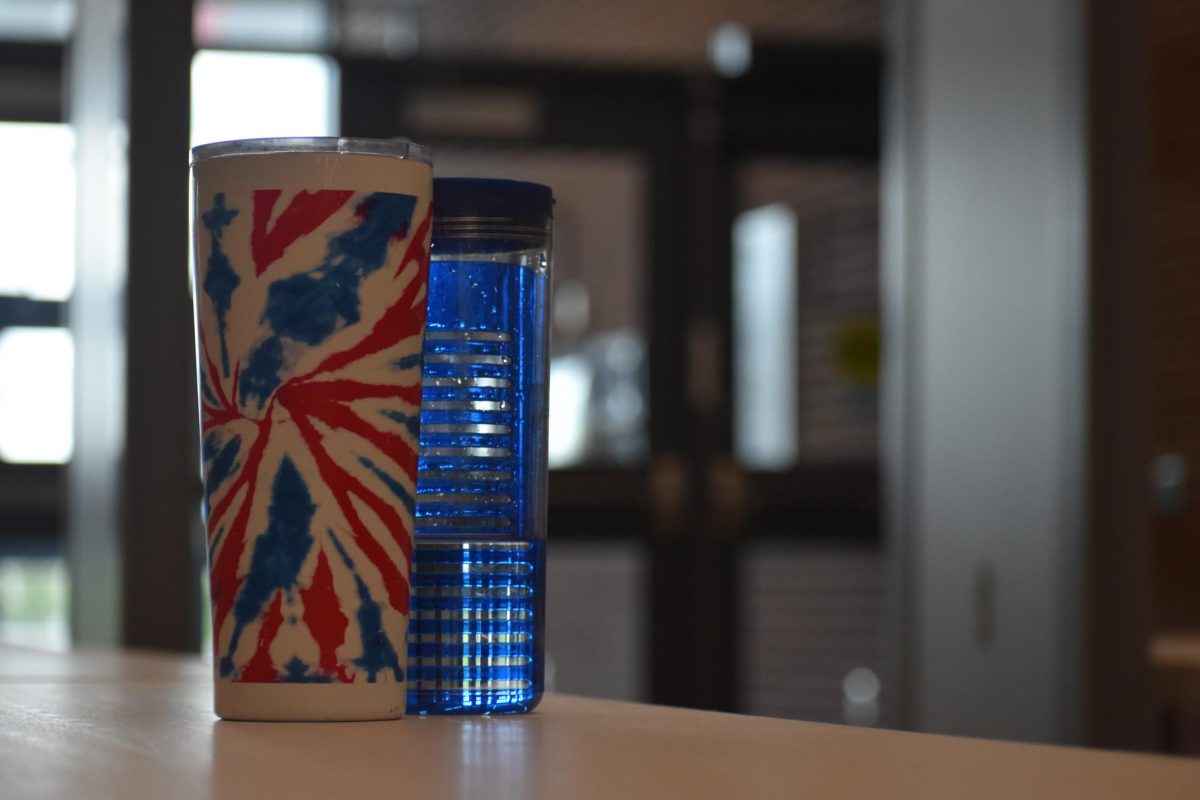This school year, school board members and administrators felt it was necessary to strengthen the drug and alcohol policies for the district.
The district made the move to enforce mandatory drug and alcohol tests if a student is suspected to be under the influence. These tests help to determine if a student is or isn’t under the influence of alcohol or a controlled substance.
“We just knew that there were times where a field test wasn’t enough to make the determination,” Principal Andrew Neely said.
If the student’s behavior, medical symptoms, vital signs or other observable factors seem suspicious, and the building principals have a reasonable right to think the student is under the influence of a controlled substance, the student may be required to submit to drug or alcohol testing. The testing may include, but is not limited to, the analysis of blood, urine, saliva or the administration of a Breathalyzer test. If the suspected students deny such tests, and don’t undergo a private test, they will be found guilty.
Senior Louren Callens and junior Lacie Lewis believe they created the tests to determine if students are truly using.
“I believe they had to make the tests because of the high frequency of kids shown to be very high on drugs or caught smoking in the bathroom,” Callens said.
“I think it’s more so because a lot of kids nowadays are doing that kind of stuff, and they just want to be cautious to try and help kids get better,” Lewis said.
According to Mayo Clinic, symptoms of being under the influence may include, “Loss of interest in activities and hobbies and in personal appearance, red eyes, slurred speech, problems with coordination and memory lapses, difficulties or changes in relationships with friends such as joining a new crowd, declining grades and problems in school and frequent mood changes and defensive behavior.”
According to Mayo Clinic, symptoms may also include, “Increased blood pressure and heart rate, red eyes, dry mouth, decreased coordination, difficulty concentrating or remembering, slowed reaction time, anxiety or paranoid thinking, cannabis odor on clothes or yellow fingertips and major cravings for certain foods at unusual times.”
According to Neely, noticeable features that seem small are some of the biggest signs looked for when assessing whether a student may be under the influence.
“We’re always looking for suspicious behavior,” Neely said. “Odor is often something that is associated with it. Those would be the two biggest ones.”
Lewis has been suspected two times, each time with different symptoms. In both instances, the symptoms were major signs that may seem minor, but are something noticeable that could have helped the safety of students, teachers and faculty.
“The first time was because my pants smelled like marijuana,” Lewis said. “That’s to do with the fact my dad actually has a medical card. The second time was because my allergies were messed up in the morning, so they said I looked [like] I was high.”
Once suspected, students are pulled to the side, and are given two options: going to the nurse to take the test, or going to another medical place to take the test, and not returning until bringing the test results to principal.
“We first do a field test that’s administered by our nurses.,” Neely said. “Then, if the nurses determine that there is a further suspicion that they may be under the influence, [that] is when we require the drug tests.”
The school can’t detect everything though, and they can miss students that are under the influence.
“I’m 100% sure students still can come into school undetected, because there’s some kids who are good at hiding it, or just don’t look anyone in the eyes,” Callens said.
The first offense will lead to three days of Behavior Modification Class and parent contact. Proof of prescription for students necessary, otherwise ten day out-of-school suspension and notification of police.
According to the Code of Conduct, students found to be under the influence will also receive a referral to the Student Assistance Intervention Team (SAIT) and will attend a hearing to determine further consequences. In the case of the student’s expulsion, they will not be readmitted for the minimum of one semester and maximum of one calendar year.
While Neely also agrees that symptoms can still go undetected, he assures they do their best for students’ and teachers’ safety.
“Anything is possible, but we try very hard to ensure that doesn’t happen because that poses a major safety risk, not just to that particular student, but all students,“ Neely said.










a • Dec 6, 2024 at 8:52 am
I feel like this “could” be okay but I think this opens up the doors to a lot of ableism and it causes kids to miss out on schoolwork for things out of their control. I also think that teachers should be random checked if they are not already. I believe that the blood test is extreme and should only be used if all other test are positive. I think in theory its a good Idea but I just have a strong feeling its going to go south.
j • Dec 5, 2024 at 8:31 am
only athletes should be tested. if a kid “looks high” and is acting fine its probably allergys if they dont look high but are “acting high” probably just their personality. its an invasion of space.
Jerry Tinkey • Nov 22, 2024 at 12:07 pm
I see no problem with this but, the same should also apply to everyone, including teachers and anyone else working with our children, not just slid under the table so that the schools are not embarrassed !!!